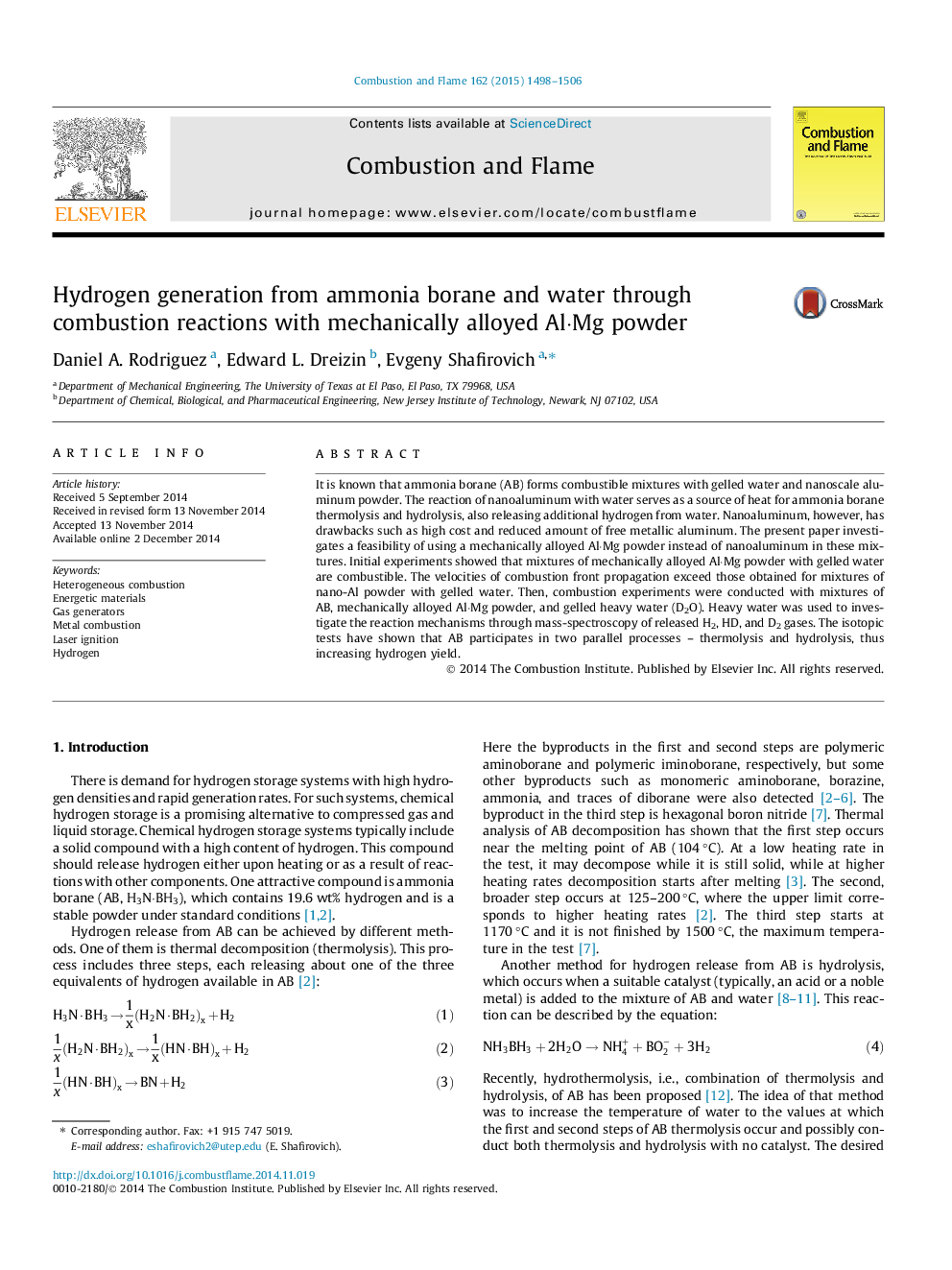| Article ID | Journal | Published Year | Pages | File Type |
|---|---|---|---|---|
| 168776 | Combustion and Flame | 2015 | 9 Pages |
It is known that ammonia borane (AB) forms combustible mixtures with gelled water and nanoscale aluminum powder. The reaction of nanoaluminum with water serves as a source of heat for ammonia borane thermolysis and hydrolysis, also releasing additional hydrogen from water. Nanoaluminum, however, has drawbacks such as high cost and reduced amount of free metallic aluminum. The present paper investigates a feasibility of using a mechanically alloyed Al·Mg powder instead of nanoaluminum in these mixtures. Initial experiments showed that mixtures of mechanically alloyed Al·Mg powder with gelled water are combustible. The velocities of combustion front propagation exceed those obtained for mixtures of nano-Al powder with gelled water. Then, combustion experiments were conducted with mixtures of AB, mechanically alloyed Al·Mg powder, and gelled heavy water (D2O). Heavy water was used to investigate the reaction mechanisms through mass-spectroscopy of released H2, HD, and D2 gases. The isotopic tests have shown that AB participates in two parallel processes – thermolysis and hydrolysis, thus increasing hydrogen yield.
